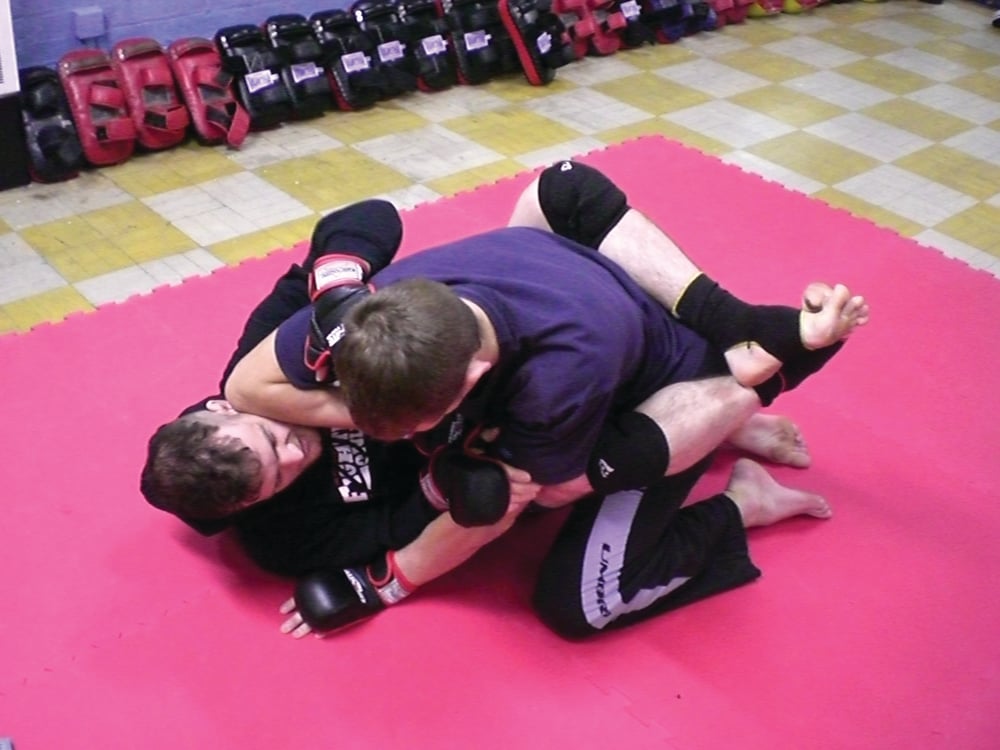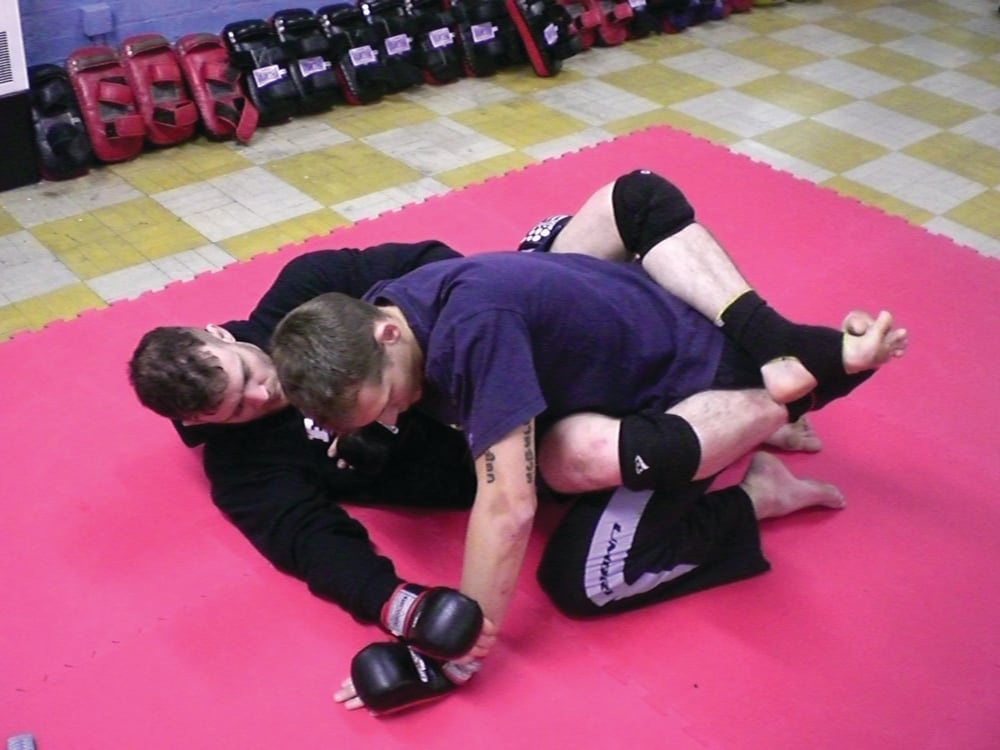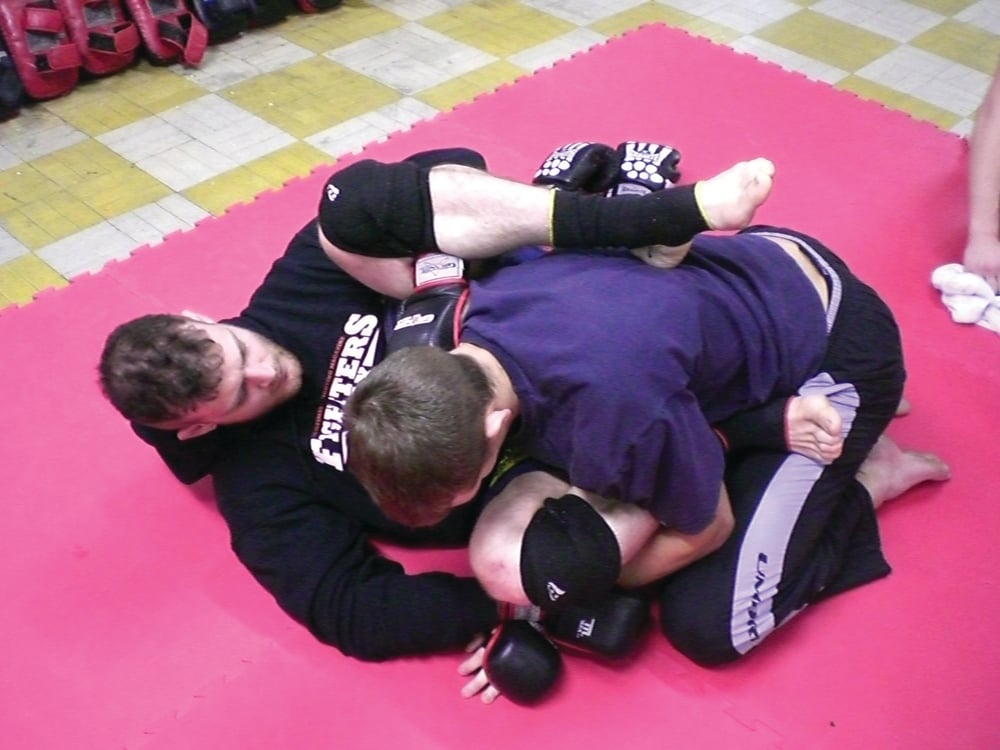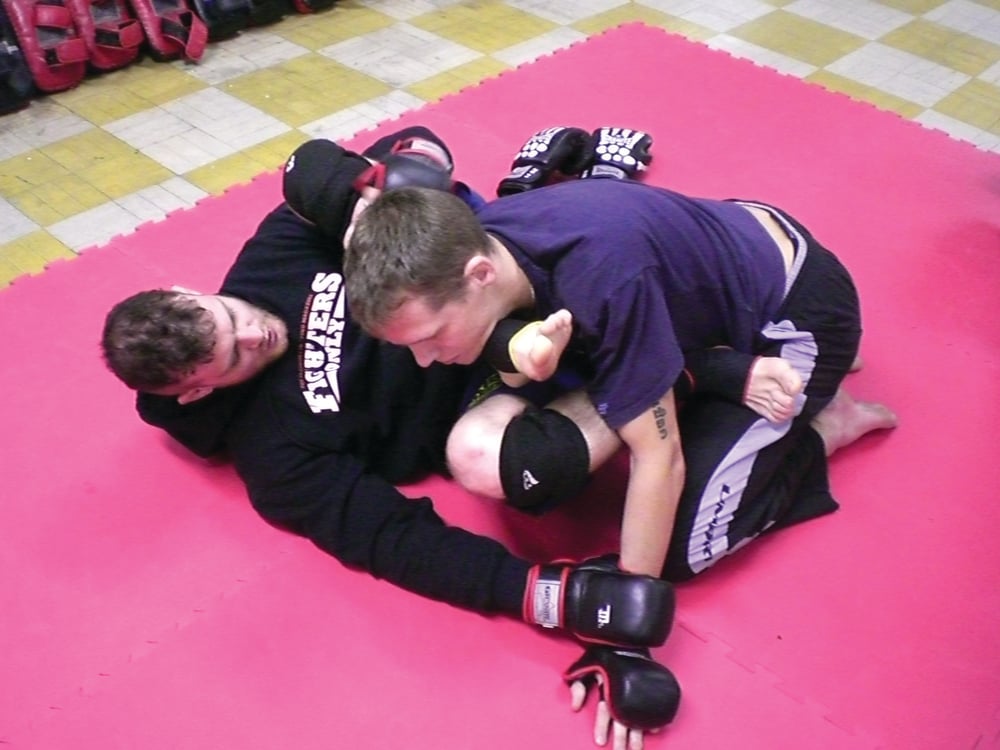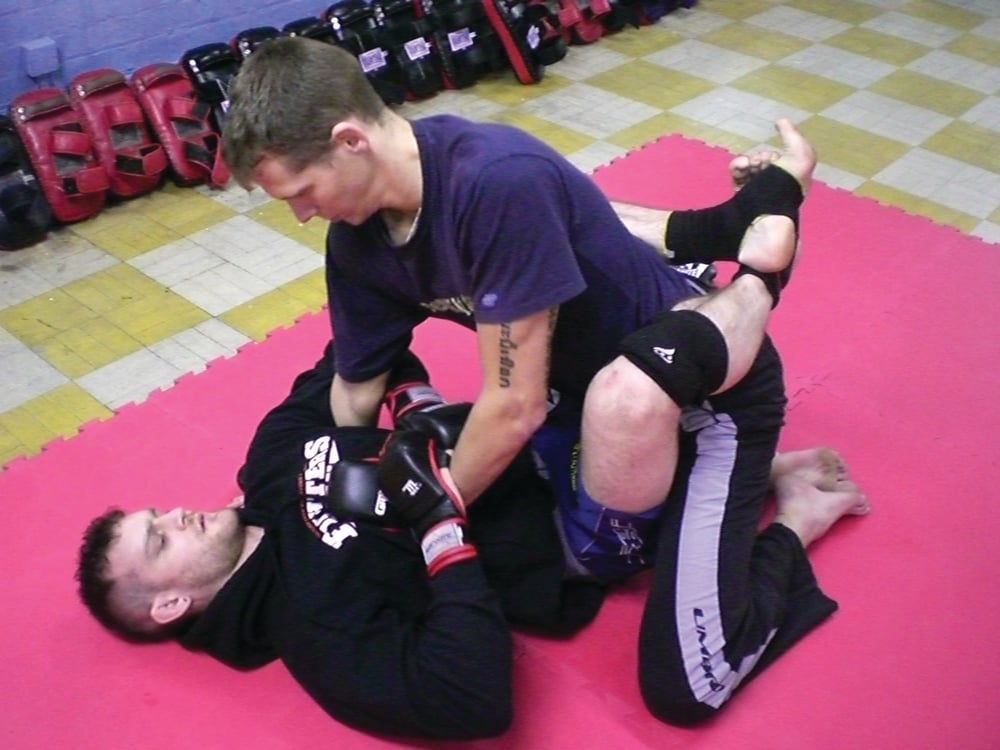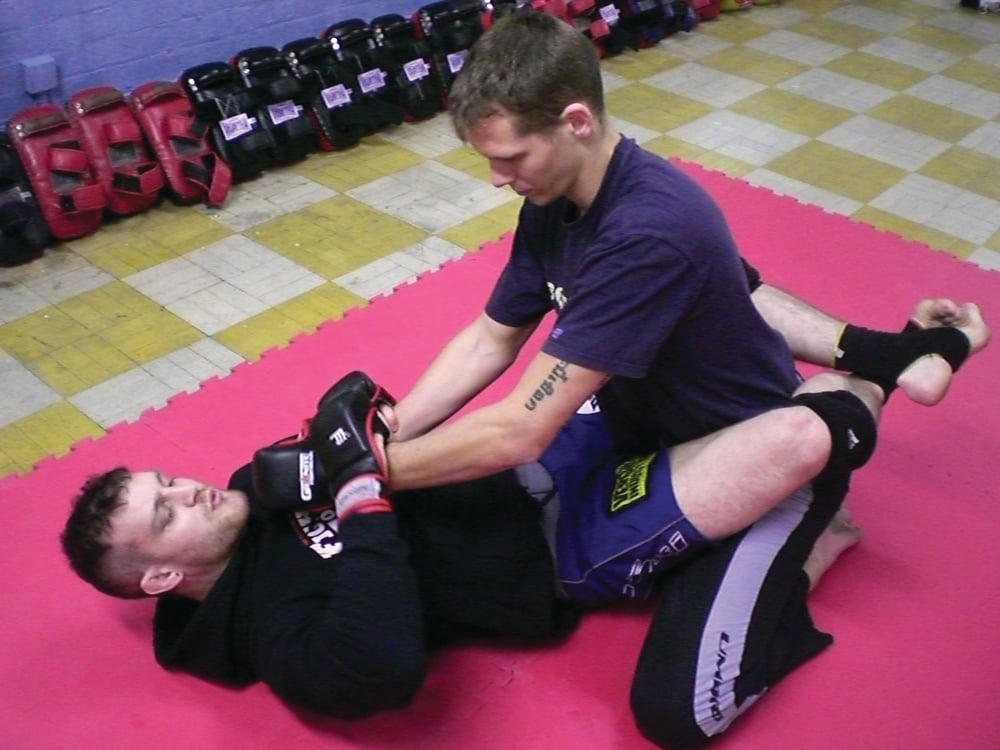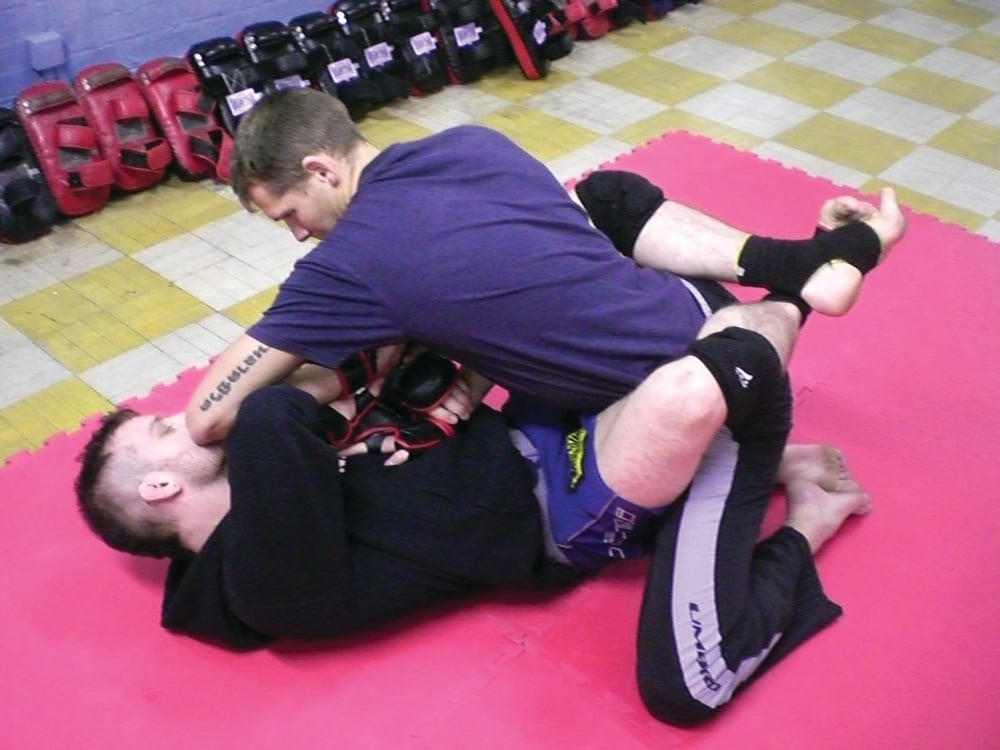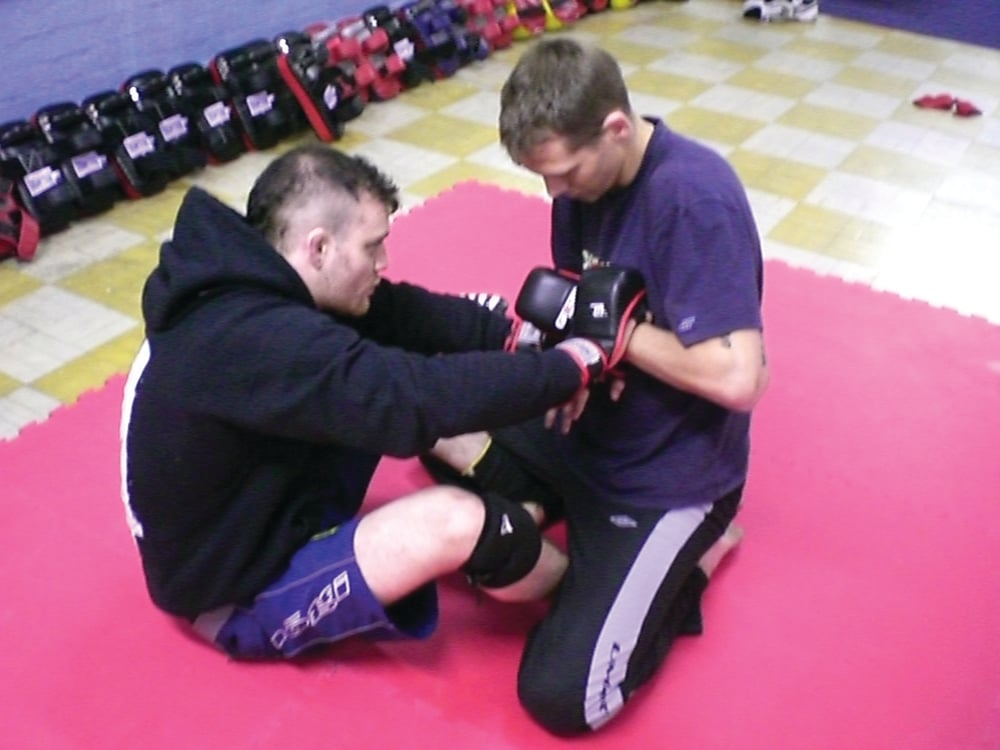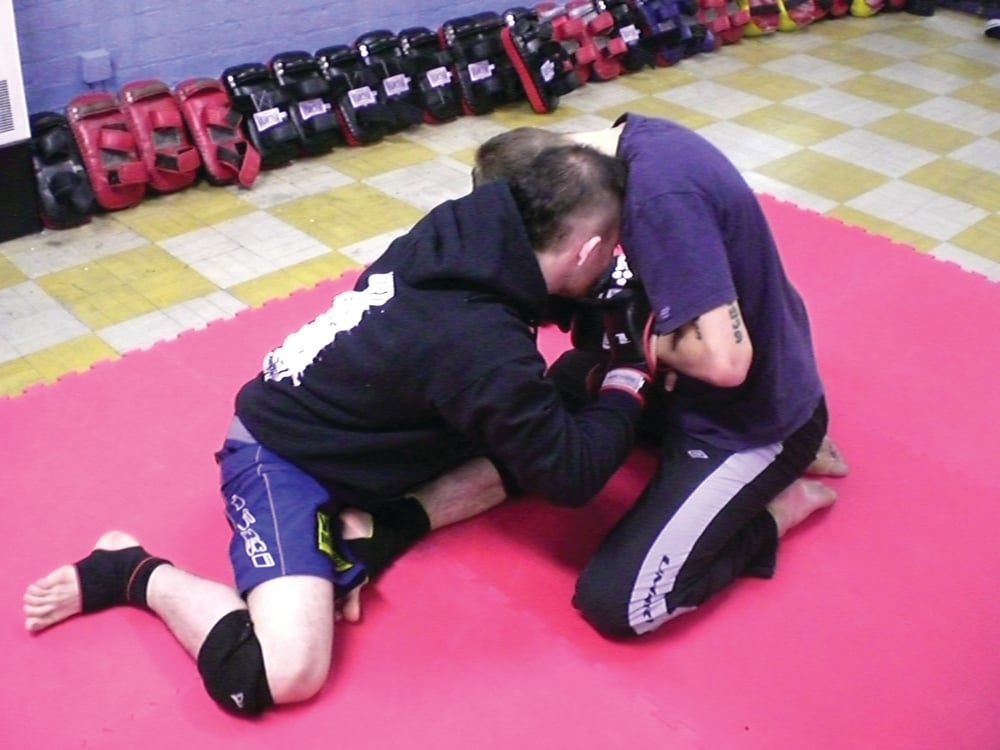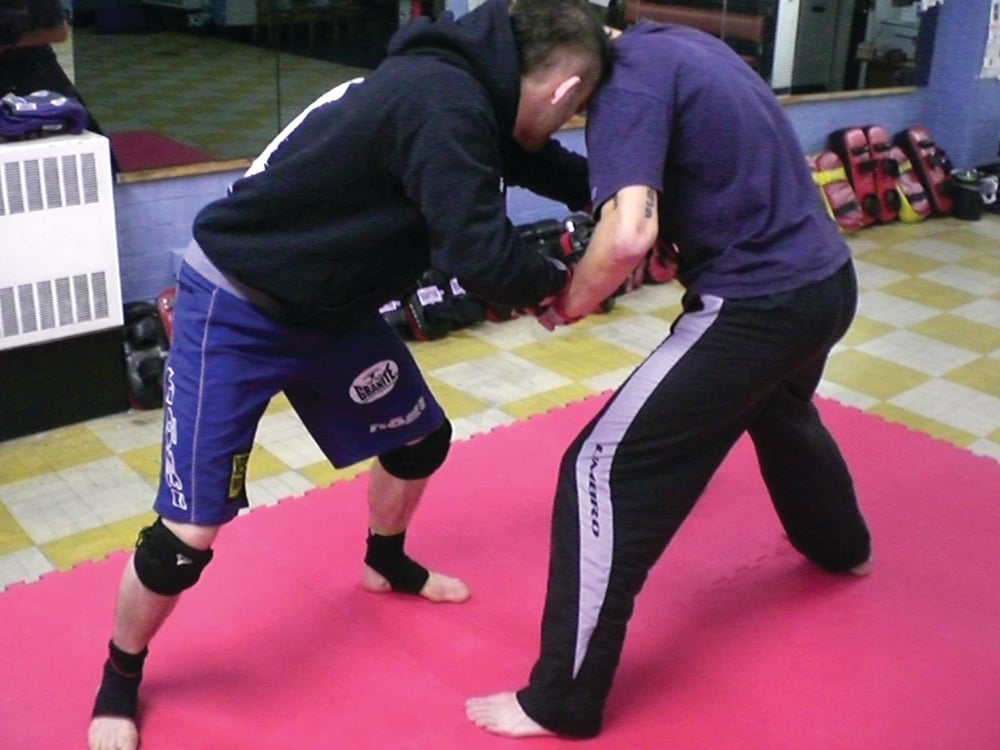
Issue 024
November -0001
1. Incorrect method: When dealing with ground and pound the underhook is no longer the preferable tie-up, as it is easy for the top man to bring his hand across the face and drop a short elbow.
2a. Correct method: Establishing a tight overhook and a wrist control effectively neutralises Craig’s ground and pound offence. With the overhook and wrist combination Pete can hip out, creating an angle to avoid shots and set up submission attacks.
2b. Reverse angle - Note the overhook is high and above the elbow and pulling Craig’s shoulder in tight.
3. An effective overhook variation, Pete traps Craig’s arm by reaching underneath his own leg and holding deep over the shoulder like an overhook. On the near side, Pete hooks Craig’s elbow over his shin with his foot on the hip.
4. With this guard Pete can attack for submissions without risking taking punishment, with the opportunity to set up a triangle, omoplata or gogoplata.
1. Incorrect method: Here Pete has a poor overhook because he is flat on hisback. Craig can easily posture up and power out of the overhook.
2. Incorrect method: Pete controls the wrists but holds them too close to him on his chest.
3. Even with a good strong grip Craig can still turn his elbow over for the strike, and with shoulders on the mat the bottom man’s head has nowhere to go.
4. Correct method: Here Pete has wrist control again but pushes in to Craig,neutralising his offence.
5. Pete can open his guard and use his hooks to control the distance.
6. If Pete wishes to regain his feet from the bottom then he can go to a sitting guard, but he must control Craig’s hands throughout.
7. Establishing a strong head position, Pete drives his forehead into Craig’s neck.
8. Having executed a technical stand up, Pete has escaped the bottom position and has a dominant clinch position from where he can break off, strike or attempt a takedown.
...

